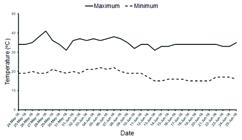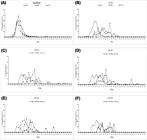ABSTRACT:
Razor grass (Paspalum virgatum L) is one weed that has gain importance because of its high seed production capability, mainly when pasture fields need to be renewed. Understanding seedling emergence behavior is crucial to devise strategies to manage this weed. This trial was carried out to evaluate the emergence pattern of razor grass seedlings on the basis of seed depth in the soil profile. The experiment was conducted in a green-house in a completely randomized design, with six replications. The treatments performed in a 11 x 3 factorial arrangement: eleven seeding depths (surface, 1.0, 2.0, 3.0, 4.0, 5.0, 6.0, 7.0, 8.0, 9.0 and 10.0 cm) by three ecotypes (Rondonópolis, Redenção and Cacoal, Brazil). The effect of origin and seed depth was measured by number of emerged seedlings, emergence speed index, relative emergence frequency, mean emergence time and emergence synchrony of seedlings at 35 days after planting. The seeds of ecotype Rondonópolis had higher vigor than those of ecotype Redenção, which had higher vigor that the ones of ecotype Cacoal. The highest seedling emergence percentage, uniformity and speed were found when the seeds were located at the soil surface, regardless of seed origin. There was no seedling emergence when the seeds of ecotypes Rondonópolis and Cacoal were located at a depth equal to or higher than 8.0 cm; and of ecotype Redenção when they were at a depth equal or higher than 7.0 cm.
Keywords:
Paspalum virgatum; ecotype; weed; pasture; emergence pattern

 Thumbnail
Thumbnail
 Thumbnail
Thumbnail
 Thumbnail
Thumbnail
 Thumbnail
Thumbnail
 Thumbnail
Thumbnail
 Thumbnail
Thumbnail

 ** Significant (p≤0.01).
** Significant (p≤0.01).

 ** Significant at 1% probability.
** Significant at 1% probability.
 ** Significant (p≤0.01).
** Significant (p≤0.01).
 ** Significant (p≤0.01).
** Significant (p≤0.01).